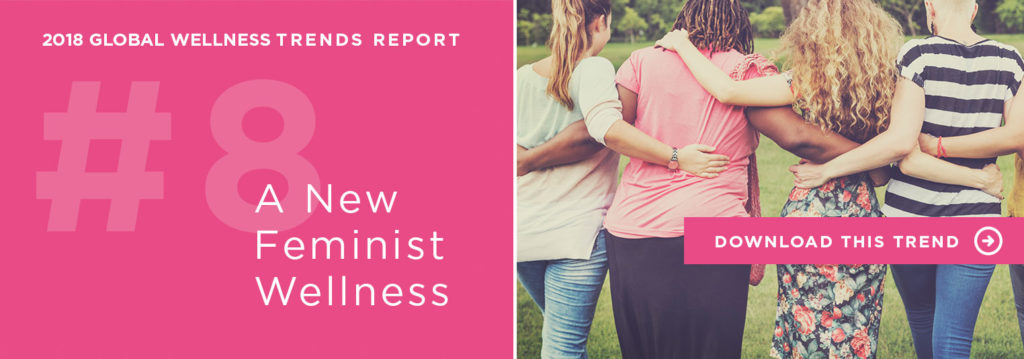A New Feminist Wellness
From women-only clubs and co-working spaces – to a FemTech wave that solves for women’s bodies and lives – to more wellness travel aimed at women’s empowerment – to women of color moving the industry beyond #WellnessSoWhite
“Feminism” – “organized activity on behalf of women’s rights and interests” – was named Merriam-Webster’s word of the year for 2017 – hardly a surprise. While not an exotic, newly-minted word (feminist movements have, of course surged in the late- 18th and early- 20th centuries, in the ’60s, etc.), 2017 was an intense year where women faced a storm of provocations and responded with their own storm of activism. The world’s eyes were fixed on the U.S. presidential election where Hillary Clinton (who would have been the first woman president) narrowly lost to an opponent that attacked women’s healthcare and reproductive rights – and bragged about groping women. The result: Exactly one year ago, we saw the first Women’s March, reaching far beyond the U.S., where 5 million people took to the streets in nearly 1,000 global marches (from Australia to Amsterdam to Africa) to sound off in solidarity about protecting women’s rights.
Last fall’s revelations about Hollywood mega-producer Harvey Weinstein’s decades of sexual abuse incited the worldwide #MeToo movement, where, within 24 hours of the first tweet, 12 million Facebook posts appeared, leading to a global outpouring of women speaking out about their own sexual harassment – and with hundreds of powerful men in the U.S. (whether in Hollywood or politics) having a day of reckoning. The upshot: Most global companies started to rethink their sexual harrassment policies. And with women technologists finally getting vocal, Silicon Valley has been publicly forced to confront its disturbing “boy’s club” culture where women are routinely discriminated against and harassed. No wonder Time magazine’s 2017 “Person of the Year” was the “Silence Breakers,” a group of (mostly) women that did some crucial veil-lifting on systemic sexism.
Yes, this new wave of feminism percolates at social media sites, with a swirl of hashtags: #thefutureisfemale, #smashthepatriarchy, #neverthelessshepersisted, #nastywomenunite. But this is making possible a global, viral spread – and real action is jumping offline (i.e., what we used to call the real world). Action is profoundly local: So many women’s book clubs or drinks nights have morphed into political action and women’s empowerment groups. And ramped-up women’s activism is making a difference worldwide. Even in the Middle East: Women in Saudi Arabia have been protesting the ban on their driving cars since 1990, and this June that ban will be lifted. The next fight: To eliminate the nation’s “guardianship” laws giving men power over their female relatives, so they can’t travel overseas or even have medical procedures without consent of their male guardian. In Iran, the My Stealthy Freedom movement sees women protesting mandatory head-covering hijabs by wearing them in defiant, creative ways. And we just witnessed a major step forward for womankind from forward-thinking Iceland (Why do you think everyone wants to go there?): On January 1, the country made it illegal for companies with 25+ employees to pay men more than women for the same job. Prove equal pay, or be fined.
2017 felt like a relentless series of attacks on, and fighting back, by women. A positive, if unintended, result of the endlessly negative, anti-woman political climate has been the rise of a new feminism. And as 2018 kicks off, the atmosphere feels more steady resolve than reactive.
“Wellness” or “self-care” could easily have been the word of 2017, as this $3.7 trillion global market saw serious growth: With stress, anger, technology bombardment, and screaming bad and “fake” news driving more people to everything from meditation and social fitness classes and healthy eating as a form of sheer self-preservation. Of course “wellness bashing” could have been the runner-up word, because as the wellness market becomes more entrepreneurial, commercial and ubiquitous, the media increasingly loves to point out its narcissistic, apolitical, elitist, and evidence-free varietals. That endless lampooning of gorgeous “wellness celebs” with Instagram followers the size of major cities – the endless clickbait lists of the “wackiest” or “stupidest” wellness trends; today, we see a vitriol against wellness seemingly more vocal than that against Big Tobacco or Pharma. There can never be too much criticism and outrage at practices that, in the name of wellness, harm people (as we write, today’s dangerous snake oil is “raw water” and “coffee enemas”). But we need to remember that there is no greater medical evidence out there for anything than the impact that healthy eating, exercise, stress-reduction, sleep, and mental wellness have on human health. Criticisms of wellness culture can be strategically narrow.
And given that the wellness movement has been largely pioneered and dominated by women, one needs to ponder how much of the wellness bashing is misogynistic. You’d be hard-pressed to name another multi-trillion-dollar industry where women represent the “majority shareholders,” comprising most of the inventors, entrepreneurs and practitioners – whether in fitness, mind-body, spa, wellness travel or as HR leaders running workplace wellness programs. At the invite-only 2017 Global Wellness Summit (GWS) for the world’s top wellness leaders, 56% of the delegates were women. And 95-year-young Deborah Szekely won the first GWS award for Living a Well Life: As co-founder of Rancho La Puerta (1940) and the Golden Door (1958) she helped pioneer holistic, non-nonsense wellness (from fitness to healthy food) decades before the word was even used.
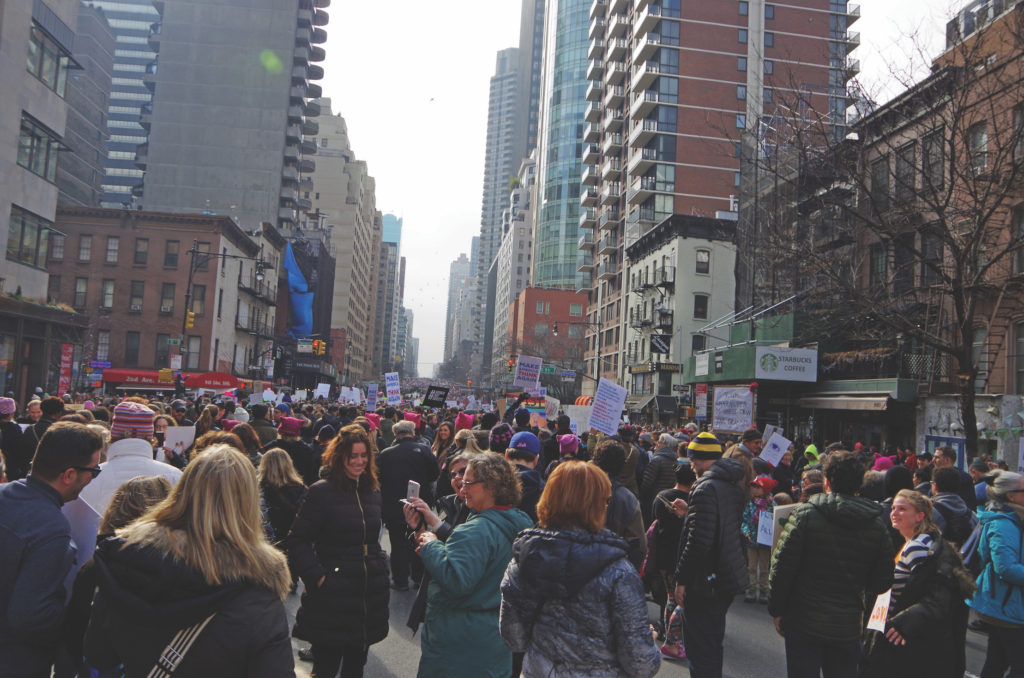
Insightful commentators have recently argued that with the wellness movement women have essentially “created their own alternative healthcare system…a direct response to a mainstream medical establishment that frequently dismisses and dehumanizes them.” At a Summit panel, Carolee Friedlander, CEO of AccessCircles, pointed out that until 1993 women weren’t typically included in clinical trials, and until 2016, no female mice were mandated to be part of medical studies. If women have flocked to wellness as a supplement to traditional medicine that still doesn’t “solve” enough for their specific bodies and physical and mental needs, it has largely been women (who dominate in wellness) that have been doing that “solving” for them. Tacitly, if not explicitly, wellness has been very much a by women, for women, set of approaches.
If critics have name-called women’s self-care (and wellness in general) as self-indulgent and intrinsically apolitical – with the recent attacks on women and with the unprecedented stress caused by our current maddening political, social and tech-overloaded moment – more people are saying “no.” They’re taking an unapologetic stance (including feminist and civil rights groups) that self-care is key to survival and its practices give everyone the strength to succeed in life, whether at work, as a family member, or as a social activist. As one perceptive commentator put it, at this moment, “It’s hard to not feel like self-care is innately political” – and what’s needed is the always tricky but right balance between self-care and social engagement. With so much fear, anger and violence around the world, it’s clear that too many people’s physical and mental wellness is far out of whack. There’s increasing fatigue among women with people mansplaining (or womansplaining) that their self-care is selfish. And if women, instead of using #selfcare, used #IworkharderforlessmoneyandtakecareofmorepeoplesoIneedtowatchmywellbeingtosurvive, the point might be clearer, but it makes for one unwieldy hashtag.
A new wave of feminism – a new more political concept of self-care (less me, more us) – a growing realization that governments and medicine aren’t hurrying to “solve” for women’s bodies and lives – means that as we move into 2018, there are powerful new intersections between women’s empowerment, feminism and wellness. In a nutshell, a new feminist wellness is rising, and it makes sense, as the wellness world has been quietly “solving for women” for years.
The women’s empowerment-meets-wellness trend takes so many crucial forms. We’re seeing a surge in new women-only clubs, co-working spaces, and collectives, designed for women to meet, network, support each other and each others’ businesses, and learn and be politically active together–served up with much wellness. We’re seeing a new brigade of women doctors, technologists and designers spotting unaddressed issues for women’s bodies and lives and creating an explosion of new “FemTech” to fix them: whether putting fertility and hormone tracking in women’s hands, creating new solutions for menstruation, or just creating “smart” bras and clothing that actually fit a woman’s body.
If #WellnessSoWhite has been a disturbing reality (if sometimes overstated), we’re seeing entrepreneurial women of color jump in to solve for women of color: whether with new for-them fitness or yoga classes or beauty brands rolling out cosmetic lines to suit dozens of skin tones. More wellness travel will be squarely aimed at women’s empowerment: whether safe extreme adventure travel for the solo woman – more retreats for women to heal emotionally (like post-divorce/break-up retreats) or those that help women get their sexual wellness back or are inventing much more women-empowering beauty programs.
Created by women, for more women, wellness will march strong in 2018.
FUELING THE TREND
When It Comes to Economic Power, The Future Really is Female
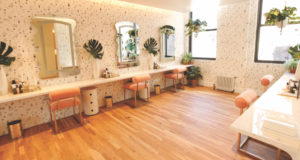
While the World Economic Forum’s latest “Global Gender Gap Report” shows that income parity at work won’t happen for 200+ years, women globally have seen an extraordinary increase in economic power, and are the future of the world economy, while men are expected to suffer future declines. Experts agree that white male bitterness was a major factor in the U.S. election, and certainly part of the administration’s backlash against women.
So much data…From 2013-2023, the global incomes of women will explode from $13 trillion to $18 trillion, and that $5 trillion represents more than twice the expected growth in GDP from both China and India. By 2028, women will control close to 75% of discretionary world spending. In the UK it’s predicted that, by 2020, women’s pay will overtake men’s, and that they will own 60% of wealth by 2025, with a similar figure forecast for the U.S. And women are massively gaining the education advantage. For example, women in the U.S. earned 42% more degrees than men in 2015 (to grow to 48% by 2022) – while in Britain it’s predicted that a girl born in 2016 will be 75% more likely to attend university than a boy. As women’s career success and spending power skyrockets, their spending on designed-for-them wellness will also soar.
Shift in Self-Care Concept: From Selfish Back to Political
Those analyzing the history of the self-care concept point to its radical roots: invented by oppressed communities that had to create their own wellness clinics when the outside world failed them. In the ’70s, for instance, wellness was in-your-face political: Feminists opened wellness centers as alternatives to a medical establishment that they felt had left women nowhere; the Black Panthers started health/wellness clinics to serve their deeply underserved communities. Audre Lorde, self-described as “black, lesbian, mother, warrior, poet,” is oft-quoted as declaring: “Caring for myself is not self-indulgence, it is self-preservation, and that is an act of political warfare.” Then from the ’80s to 2000s, when wellness, fitness and spa went mainstream and commercial, the self-care concept got severed from politics and became narrowly associated with wealthy women. Now, given the charged political and social moment, a more feminist self-care is re-emerging. Yes, the millions of #selfcare hashtags on Instagram picturing tricked-out hygge nests or expensive juice detoxes are a far cry from the Black Panthers. But more women honestly yearn for a model where caring for oneself and caring about politics and women’s rights interweave, and more women want to support wellness businesses and products that tackle that issue and stake that claim.
In Women-Dominated Wellness Industry, Woman-Empowering Wellness Is a Natch
When it comes to entrepreneurship, women are gaining on men. In the U.S., 41% of new entrepreneurs are now women, while women-owned businesses jumped 45% from 2007-2016. In the latest Global Entrepreneurship Monitor, tracking 50+ nations from 2011-2016, women’s entrepreneurship rates rose by 13%, while men’s only increased by 5%. As noted above, there is no industry of its size that is so heavily dominated by women entrepreneurs and practitioners than wellness. It’s odd that in the past this hasn’t been discussed more (maybe women in wellness felt uncomfortable signposting that) – well, no more.
More female-founded wellness and beauty brands are putting the story of the woman founder and her journey (and a message of women’s empowerment) front-and-center – and it’s supercharging their brands. Pandora Sykes has called it “BFF Marketing” and described this woman-to-woman brand approach as, “Chatty, inclusive and intimate… predicated on the notion that a brand is your friend, and is designing products especially for you—it’s the core narrative behind the rise of some of the most successful…beauty brands in the marketplace right now.” We would add that it’s largely been women entrepreneurs that have yoked wellness to the fashion mechanism, which has made it powerfully aspirational (the healthier new retail therapy) and has blown up its global reach – why you can get your barre classes at the YMCA and the healthy food revolution reaches so deep. Wellness bashers bash wellness for the fashion-industry-like speed at which trends arise. But wellness guru Dr. Andrew Weil, in his keynote at the Global Wellness Summit, argued strongly that “we need to make wellness more fashionable” – not less. Traditional medicine has done an awful job of inciting lifestyle change or making it fun or desirable. The feminist wellness trend is driven by the fact that women are the fastest-growing entrepreneurs (and wellness is very much their industry), and they’re slowly getting more venture capital as people recognize women’s spending power and increasing interest in buying products/services created by women for women. The wellness market has been tacitly doing woman-focused wellness for decades – now it gets more explicit.
ASPECTS OF THE TREND
“Covens” of Community: Women’s Co-Working Spaces, Clubs & Wellness Collectives
In 1929 Virginia Woolf wrote that for a woman to be successful, she must have “a room of her own.” What more smart women seem to want most now is a woman-only (and often feminist-forward) space where they can be with other strong women to work, network, make friends, empower each other, unwind and learn – with a lot of wellness often on tap. These women-only shared spaces, a much more “boss-lady” version of the old 19th century women’s club, are popping up in North America and Europe at dizzying speeds. Some have a core DNA that’s health and well-being, at others the focus is work and networking, but with wellness an increasingly strong side dish. All are aimed at giving women a safe – and usually very chic – place to have some face-to-face (as opposed to digital) sisterhood connection, and respite from a testosterone-heavy world. As Kate Percival, founder of London’s famed woman’s club Grace Belgravia, puts it: “There’s been a paradigm shift…increasingly women are seeking out other women’s company…Women have become less competitive with each other, more embracing and there’s a sorority that is stronger than ever.”
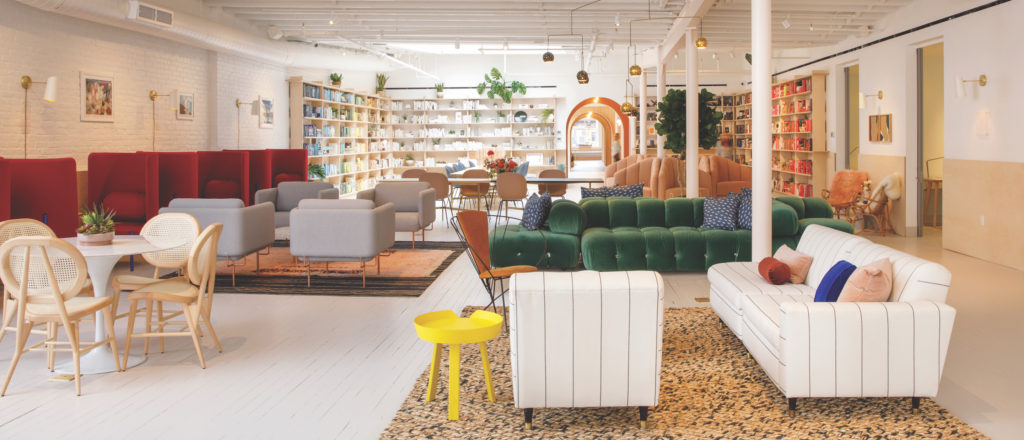
Examples:
New York’s The Wing grabs serious headlines. The part social club, co-working studio, and beauty/wellness space that opened in late 2016 in a glam pink-hued penthouse-loft space in Manhattan’s Flatiron district is that second empowering space for hundreds of NY women – aged 20s to 70s – whether CEOs, artists, lawyers, bankers, moms, doctors, academics or politicians. Founders Audrey Gelman and Lauren Kassan have described The Wing as “a coven, not a sorority” and “a place for women on their way.” While they have a powerhouse roster of members (from Tina Brown to Natasha Lyonne to rapper Remy Ma), they describe their operating principles as “career and racial and ethnic diversity” and they’re both “unapologetically capitalist and activist.”
The Wing offers that lucky member (there’s an 8,000 woman waiting list, at last report!) suave work and meeting spaces; an all female-authors library; social events like serious lectures, craft seminars and a book club – even poker nights or “braid nights” with Glamsquad; and a healthy café. While wellness wasn’t in the original blueprint, stressful times changed that: They have luxe spa showers, a hair and primping salon, meditation, Reiki healing, and workshops on everything from managing anxiety to prenatal health. Sounds expensive? Their $215/month membership fee is in line with most co-working spaces – and they’re soon launching a scholarship program. While not politically partisan (a Republican congresswoman is a member), political and feminist engagement is a major focus, whether sign-making parties for the Women’s Marches or breakfast with Planned Parenthood reps.
They’ve grown so blazingly fast in just over a year that they’re about to go on their own global Women’s March. They’ve raised $42 million, with a recent $32 million from co-working powerhouse WeWork (who seems to be circling the wellness and women trend, as they just made SoulCycle founder, Julie Rice, Chief Brand Officer). This will help fund a U.S. and even global expansion: they’ve already opened in Soho, NYC, and in early 2018 they open in Brooklyn and Washington, DC – with predictions for locations across the country (and abroad). First up: LA and San Francisco. As they recently put it, ”We’re ready for Wing world domination!” They’ve even just launched a print magazine, No Man’s Land.
London’s Grace Belgravia, founded by Kate Percival, is a toney club where the focus is on helping women achieve peak wellness – physically, mentally and emotionally – so they can perform at the top of their game. It goes deep, deep into wellness: with a Medical and Well-being Clinic full of international experts and therapists focused on prevention and aging well; an extraordinary spa and hammam; healthy restaurant and bar; and a gym specializing in woman-focused workouts. There’s also much food for the brain: with a calendar of events featuring experts on arts, fashion and culture – and panels with pioneers and academics exploring health in the 21st century.
WMN Space in LA, founded by Paula Mallis in 2017, is a women’s-only “wellness hub” all about collective healing. Set in a sunny space strewn with sheepskins and Moroccan rugs, WMN Space is an outgrowth of the women’s circles (a big wider trend) Mallis long held in her own home. And its packed program spans meditation, moon circles, voice and sound baths, movement, and Ayurvedic nutrition – even a doula support group. And the plan is to open up the program to tween girls, who with their record levels of anxiety and depression, need some serious healing and female connection.
Verity in Toronto, founded by former investment banker Mary Aitken, is a vast work and wellness club that gives time-stressed women a place to network, forge relationships, and get support with their individual challenges. It features meeting rooms and a lounge, a fitness center, spa, pool, restaurant and hotel.
A plethora of others we wish we could describe! The new (affordable) Club W concept launched in Sydney, Australia, is part community teahouse, part social club, part wellness education center, and part fitness/movement studio – designed for older Baby Boomer women who crave community in a space where they can also immerse themselves in wellness. Hera Hub, which calls itself a “Spa-Inspired Co-working Space” for women (and the first international brand, with 6 locations in the U.S. and Sweden, and more coming soon). Notable at Hera Hub, like many of these spaces, are investor pitch nights for women and angel investment arms dedicated to finding them funding. At Trouble Club in London, held in glam places like Corinthia Hotel and the Groucho Club, the goal is to “enliven women’s minds and expand their circle of friends” and “build a society of smart, woken women” – with evening talks by star women speakers on everything from politics and economics to art and film and sex. There’s Brooklyn’s (new) New Women Space with its blend of co-working, wellness and female empowerment. There’s The Hivery (Mill Valley, California) – JIG+SAW, Paper Dolls and One Roof Women in LA – the Center for Social Innovation’s The Women’s Lab and SheWorks Collective in New York City – and Toronto’s Shecosystem.
The co-working industry is expected to boom in Asia, but, for now, women-only spaces lag behind. Despite this, experts argue Asia is the next frontier and they’re coming soon.
A Femtech Explosion: Women Innovators Solving for Real Women’s Bodies
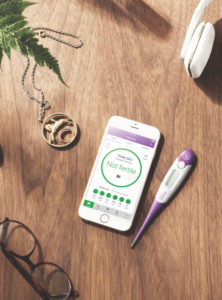
Women’s bodies and women’s needs over their body’s lifecycle have gotten (understatement) short shrift in just about every market direction – from contraception to fashion. Why? Because for so long men have been “designing” for bodies they can’t even experience. One of the most exciting wellness trends, period (and yes, “solving” for women’s periods is part of it) is the explosion of women doctors, technologists, scientists, designers and entrepreneurs unleashing a waterfall of smart “I get it” products and technology solutions aimed at cracking the code for women’s unique needs, bodies and sexuality. It’s called “Femtech” and it’s an extraordinary potential market (a year ago, CB Insights reported that 45+ Femtech start-ups had raised $1.1 billion, and that’s certainly grown since) and whole new landscape of female-founded companies. Called out in other 2018 trends reports (whether J. Walter Thompson’s or Well+Good’s (“Biohacking Women’s Wellness”) – the Femtech revolution is absolutely central to the feminist wellness trend. And women-led companies are building everything from a smarter, less painful mammogram (Hologic) to smarter, cooler breast pumps (Willow).
Solving for Periods
Over the last couple years, young women have gotten uber-vocal, especially online, about their periods, smashing silly taboos about something as natural as rain – and inspiring a Femtech re-think of the menstrual experience. We’ve had start-ups like Thinx with (cute) “period panties” that replace (or are used as a backup to) tampons and pads – or 100% certified organic, environmentally-friendly tampon subscription companies like Cora, with products synched to a typical menstrual cycle, and where each monthly supply bought gives back a month’s worth of pads to girls in need around the world. There’s a new crop of menstrual cups: medical-grade, insert-able silicon cups that catch blood in place of a tampon, and they’re reusable (women use 17,000 tampons/pads in a life) and wearable during sex – like those from woman-founded companies Flex or Lunette from Finland. Higher tech: The MyFLO period app that lets you track and analyze your menstrual cycle like a scientist. It breaks down women’s cycles into menstrual, follicular, ovulatory and luteal phases, and offers in-depth explanations of how your mood and energy levels will be affected, and how to make adjustments, by matching suggested activities to each period/symptom stage – from diet, to what kind of exercise to do. They also recently rolled out a subscription box of vitamin supplements to address the exact micronutrients lost over a period. Can someone now start solving for often debilitating period pain that doctors say can be being as bad as having a heart attack?
Fertility & Hormone Tracking Apps – Disrupting Contraception and Fertility
One of the Femtech developments with powerful implications is new fertility cycle and hormone tracking technology/apps, which let women monitor and understand their fertility and hormones in real time. And which could disrupt unnatural, Pharma-based contraception and fertility strategies. A key development because more women want to get away from potentially dangerous synthetic hormone birth control for something more natural – and more women, not just pregnant women, see fertility and their hormones as a window into their their wider health. These apps put their hormones/fertility in the palm of their hand, whether their goal is to get pregnant or not.
So many examples…Cycle-tracking app Clue (from Berlin) gets high accolades for its rich display of info and measures recorded: from when a woman is ovulating to heart rate variability. Female-founded, soon-to-launch Me.Mum is a smartphone camera attachment that detects mold-like particles in women’s saliva signaling when she’s most fertile. The one to watch: Sweden-based Natural Cycles, the first app to be officially approved as a valid form of contraception (by the EU in 2017, paving the way for expansion). Co-founded by Dr. Elina Berglund (a nuclear physicist who was part of the team that that won the Nobel Prize in Physics in 2013), this digital, algorithm-based contraception technology detects detects a woman’s ovulation and her fertile days (with daily, under-tongue temperature checks), also taking into account other factors like period cycle irregularities and sperm survival. The app tells women when it’s a “red day” and they’re likely to get pregnant or a “green” day when she’s not fertile. More than 500,000 women in 161 countries now use it, and their study on 4,000 women showed it to be 93% effective with typical use – while oral contraceptives are 91% effective with high-quality use, according to the FDA! They’ve raised $30 million in funding to aid global expansion – and very much want to bring it to the U.S., which the FDA could well approve.
Other innovations: Qurasense plans a smart pad that tests the hormones in menstrual blood, while Bisu’s smart toilet could soon check your urine for signs of ovulation. With NextGenJane technology meets tampons, as a device in development that tracks hormones and fertility, but also wants to clue women into things like cancer and STIs -working like a natural monthly biopsy- because what women expel each month into their tampons can tell them many important things. The new UK website, wearemoody.co.uk calls itself a digital ecosystem for hormones, cycles and moods. Women build a profile, then get personalized advice on how to balance hormone cycles and symptoms. In 2018, it will launch the app MOODY-U, which tracks and predicts your mood and hormone cycles by connecting data such as steps taken, sleep, sex, and your exact menstrual cycle right into your calendar – so you can plan the moods and hormones headed your way in the month ahead.
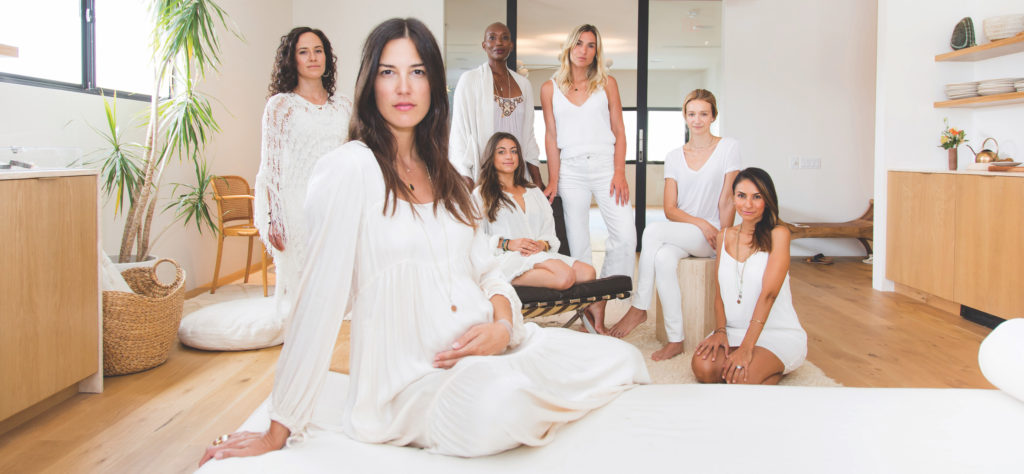
Solving for HER Pleasure & Sexual Wellness
Back in late 2015, the authors of this report issued a trend (under another organization) called “Sexual Wellbeing: Taboo No More” – which dove into the many innovations happening in sexual wellness for women, and whose point was that, finally, sexuality needed to be placed firmly under the “wellness” column. We were a couple of years early. As it’s really now that sexual pleasure brands are strongly aligning themselves with wellness, and sex is fast shedding its taboo status thanks to young people. No matter, in those two years the made-by-women for-women sex tech solutions have only spawned: from vibrators that zero in on women’s pleasure, to supportive online “sex ed” solutions, to devices that strengthen the all-important pelvic floor.
“Sex toy” seems a rather childish descriptor for the new profusion of women’s vibrator and pleasure technology: They’re hi-tech, high quality and highly sophisticated. One example: buzzy vibrator innovator Dame Products, started by two young women (one an MIT engineer, the other a sexologist), has a burning mission to solve for the best clitoral stimulation possible.
Aging and childbirth take their toll on women’s pelvic floor muscles, which can diminish sexual pleasure and cause loss of bladder control and pain during sex. A whole slew of hi-tech devices are stepping in to make those nobody-wants-to-do-them Kegel exercises a snap. Bluetooth-enabled, egg-shaped Elvie was an early mover and tracks the efficacy of Kegel exercises (via motion sensors) and then connects to a smartphone app to provide biofeedback, as well as gamifying the exercises: you keep a little ball bouncing if you’re doing them right. More such devices are on their way in 2018: like Joylux (recently launched in Europe and headed to the U.S.), whose vSculpt technology zaps the pelvic floor muscle with sonic vibrations to build up its strength.
Because women lack supportive, expert-led places to talk openly about sex and their pleasure, Andrea Barrica, a former Silicon Valley venture partner, just launched O.School, a virtual platform where women and gender-diverse people can get the shame-free “Sex Ed we all should have had.” It offers pleasure education through live streaming workshops and moderated chats featuring 65+ diverse sex educators (called “Pleasure Professionals” – and half are people of color, 15% non gender conforming or trans) to explore everything you want to ask or know about sex.
When it comes to women’s sexual pleasure and the smart tech to empower it, inhibitions are falling fast. One example: Last fall, the women’s sex toy brand Hot Octopuss held a pop-up in NY called The Changing Room where women could get an “orgasm makeover.” In 2 days, 1,000 women attended.
Clothing For Real Women’s Bodies
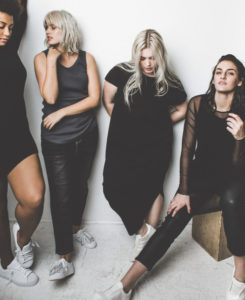
If sexy bodycon clothes were once a signpost of women’s freedom and empowerment, now a new covered-up, loose, unstructured, even dowdy, look is the new power dressing for women. As The New York Times chief fashion critic put it, ”Modest fashion is the defining trend of the 2010s,” a “feminist signaling” that you’re opting out of sexy beauty standards for a “conceptual, better-than-thou” fashion.
Fashion is also getting more feminist by finally acknowledging the actual size of real women’s bodies. Forty percent of women globally are overweight; over 50% of women in Europe and the Americas are; and 67% of U.S. women qualify as plus-sized – yet their need for designer clothes that look and fit great has been grossly underserved. Women-founded companies are now fixing that. A shining example: Universal Standard, launched in 2017, with their cool, simple garments specifically designed to flatter women sized 10-28…and the company will replace clothing for free for a year with a new size, for whatever reason. The eye-opening growth for companies that take plus-sized women seriously is rippling across the fashion industry: To stop ghettoizing larger women in the shopping experience Nordstrom’s recently combined plus-sized clothing with the rest of its lines, and so many more plus-sized models are strutting the fashion catwalks.
Women-founded start-ups are also solving for women’s clothing pain-points. For instance, Evelyn & Bobbie, using a team of female engineers, reimagined the bra to rid it of its torturous underwire, inventing a seamless bra that works by redistributing weight from the shoulder to the torso, and you can order it to exactly fit your waist and bust size.
Women of Color Revise #WellnessSoWhite
The wellness industry has long – and extremely justifiably – been criticized for projecting a very narrow image: a tall, young, skinny, white woman. It’s maddening for women of color, and just about most women. #WellnessSoWhite has been a stubborn reality, a serious problem with representation, even though spa, beauty, travel and fitness companies know firsthand that women of color are very passionate about self-care and a powerful customer base.
In 2018 we’ll see change. We’ll see more entrepreneurial women of color solve for women of color: whether with designed-for-them yoga classes and wellness retreats or beauty brands rolling out inclusive cosmetic lines to reflect the actual spectrum of skin tones. And we’ll see more women of color become more visible and powerful in wellness generally, whether as fitness influencers or company founders – remaking wellness as a much less white space. Perhaps it was telling that Vogue’s January 2018 issue featured Kenyan actress Lupita Nyong’o (a crucial voice speaking out against Harvey Weinstein) on the cover, in yoga tree pose atop a paddleboard, with the word “wellness” splashed across the cover.
There will be more fitness and yoga classes and wellness retreats designed as empowering sanctuaries for women of color. The pioneer was Black Girl in OM from Chicago, a multidimensional wellness brand that “creates space for women of color to breathe easy”: a collective of classes (like Self-Care Sundays), health workshops, and an online publication and podcast Om that reaches women of color well beyond Chicago. Women are launching wellness studios for people of color generally, like Yogahood in London, founded by Sanchia Legister, whose sold-out classes have an urban vibe that’s a far cry from the usual canned spiritual gong soundtrack. And Legister has recently launched Gyal Flex, “the urban face of well-being,” a class that fuses hip-hop with meditation. Oya Retreats recently launched, the first yoga retreat for women of color in the UK, and branched out to urban yoga retreats in London. In the U.S., Elyse Fox founded Sad Girls Club in 2017 to create a real-life community for young women of color with mental health issues.
There will be more wellness media platforms for women of color, like OMNoire, launched in 2017 by serial entrepreneurs, Christina Rice and Amber Forester, which encompasses yoga, meditation and spiritual growth, as well as holding wellness retreats throughout the year. Their first (sold-out) retreat was held last fall in Grenada, attracting women from around the world.
The beauty industry is getting an inclusivity shake-up, finally creating products beyond the old “three shades of brown” for women of color – with ew product lines exploding any old-school belief that darker skincare doesn’t sell. The big story in 2017: the launch of pop star Rihanna’s beauty brand, Fenty, a cosmetics line that includes foundation in 40 shades. It has lit up social media on the topic of diversity in beauty, and raked in a cool $72 million in earned media in its first month. Vogue named it (and greater inclusivity in beauty generally) a top 2018 beauty trend, saying Fenty Beauty “singlehandedly changed the conversation,” and NDP Beauty UK argues that you can expect to see more brands following this strategy in 2018.
More women of color will stake their rightful space in wellness in 2018: whether entrepreneurs like Latham Thomas, whose Mama Glow is a wellness resource for new and expecting mothers, or practitioners like yoga guru, Jessamyn Stanley.
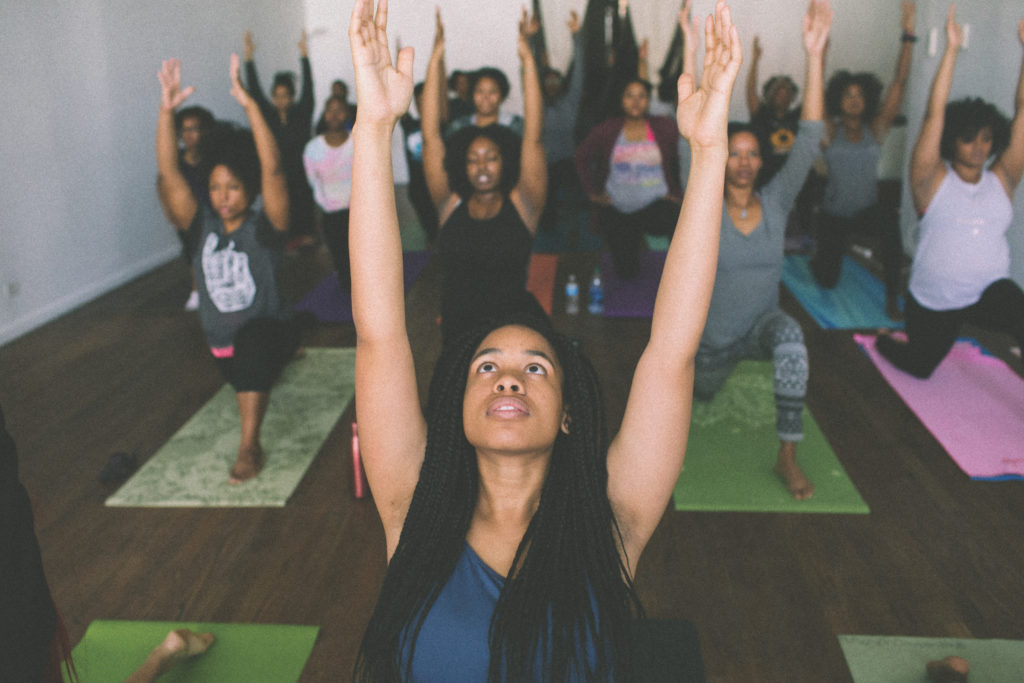
Wellness Travel Squarely Aimed at Women’s Empowerment
Most wellness travel is aimed at women and there are a gazillion female-only wellness retreats each year, each bent on the physical, mental and spiritual empowerment of women. In the past though you could say that women’s wellness travel has been more about comfort than epic challenge – more pampering by the pool with your BFF – or where the psychology of empowerment offered up is rather “soft” (lots of “unleash your goddess” getaways). Somehow women’s-only travel used to get met with a “how sweet” response. Now, more wellness travel for women actually reflects some key elements of our fourth wave of feminism moment: wilder and tougher, less orthodox and more creative, a little less about me than we, and where, whether feminism is or is not a proud political tag you wear, it’s still essentially your lifestyle choice. It would be impossible to describe even a fraction of the new directions wellness travel is taking to empower women…here are just a few.
Pampering? No, Tough & Transformative Adventure Travel
More women travelers now seek – and associate wellness with – a high-adrenaline surf retreat or climbing to Machu Picchu than a lazy spa weekend. Yes, millennials are a big factor here, but the average adventure traveler is a 48-year-old woman. There’s a growing slate of women-only adventure travel companies where the key “wellness” served up (besides the physical challenge and female bonding) is the personal growth that happens when you bust far out of your comfort zone, go off the grid into nature, and tackle an intense physical adventure with other fearless women – even if you’re traveling solo.
A standout: Adventure Women, run by women (a mother and her two daughters), that leads groups of women on intrepid adventures all around the world. And even more epic adventures for women will be available from the company in 2018: whether exploring Iceland by horseback or trekking through wild Mongolia with Eagle Hunters. You can feel their feminist vibe: Before a trip their reps answer all traveler questions, like where they will be able to access tampons or birth control abroad. Another standout: female-founded WHOA Travel (which stands for Women High on Adventure) that has taken women on “kick ass” adventures in 65 countries, and 2018 expeditions include a trek to the base camp of Mount Everest and Kilimanjaro trips (one will culminate on International Women’s Day).
Like many of these women adventure travel companies, WHOA doesn’t just focus on the wellness of their travelers, but is committed to social justice for women and children who live at their destinations. For instance, for their Kilimanjaro treks, guests stay at a non-profit hotel that funds a local school and traveler fees sponsor two local women to join every climb. Damesly, which is focused on creative and professional women, blends adventure with professional networking and skill building – combining volcano hikes in Iceland and surfing lessons in Hawaii with workshops on topics like video editing.
Painmoons: Women’s Wellness Travel Gets Real about Anger & Sadness
On social media everyone projects that perfect life: another amazing, exotic trip – another dream wedding. And much of wellness travel is geared to all those happy “women’s milestones,” those markers that are supposed to be part of a woman’s life: honeymoons, bachelorette parties, babymoons, etc. Now more wellness travel for women acknowledges that women’s lives (like everyone’s) include divorce, break-ups, grief, loss, anger, fear, a loss of sexual happiness, etc. Call them “painmoons,” or tough turning-point wellness travel, more retreats are getting real about the fact that people going through rough chapters need wellness the most – and more retreats will be focused on helping them get past it, with a more creative roster of emotional healing approaches, whether your issue is heartache post-breakup or pain from thinking you’re not beautiful enough.
More wellness retreats will be specifically focused on healing after break-ups, like the UK’s Orchid City and Spa’s new “Divorce Parties”, packages designed for newly divorced women to do some healing with their friends. More retreats will be about getting support for any kind of emotional or life-challenging situation, like Kamalaya in Thailand’s new “Embracing Change” program, which uses a whole arsenal of wellness tools to restore people’s emotional balance after loss, break-ups, work issues, anxiety or grief.
More all-women’s wellness retreats will go further “out there” to tackle women’s pain, anger and negative feelings about their body and sex. Take Borgo Egnazia’s inhibition-shattering, three-day Tarant Program (the resort is in a village in Puglia, Italy), which is designed for “women with a shattered soul in need of revolution.” They purposely keep the details of the retreat secret “to expand women’s trust capabilities,” and it may be a smart strategy because many women might initially shy away. The program is all about wild catharsis about matters of the heart, whether you’ve just suffered a breakup or your sex drive is gone. Sessions span everything from dancing to drums, “laughing and screaming in primordial ways,” tambourine banging, (simulated) sword fights, “intense sessions” with the resident shaman, and some mind-melting treatments in the underground candlelit spa…All aimed at transforming women’s feelings of sadness, anger, embarrassment and self-loathing into a heady new self-empowerment.
Beauty Gets a Brain
The beauty market is the $1 trillion beast in the $3.7 trillion wellness market, and the goal of a solid chunk of women’s wellness travel is explicitly to get that “beauty transformation.” But what percentage of beauty, which often involves an egocentric and relentless seeking of perfection – and women embroiled in competition with, and criticizing, each other – is actually “wellness”? What percentage of beauty is essentially “brainless” or doesn’t take into account the complex ways that our brain impacts our beauty? Or explores the difference between “looking beautiful” and “feeling beautiful” and how they’re related? The beauty market hardly ever goes deep on these issues.
A soon-to-launch program at Six Senses resorts, their new Holistic Anti-Aging clinics, will be the first to tackle these exact issues head-on and firmly put the “brain” back into the beauty equation (and brain transformation as a key path to true beauty). It’s a real first, and is designed to be a far more woman-empowering approach. The program marries advanced topical beauty with “inner” beauty approaches like nutrition, hydration and sleep – as well as investigating the connection between beauty, the skin and the brain. They’ve engaged neuroscientist Dr. Claudia Aguirre (along with other beauty-and-brain experts) to make this happen.
The program has three phases (cleanse+restore+ nourish), and each phase includes approaches that tackle topical beauty, “inside” beauty, and brain beauty. The “brain beauty” program involves everything from a (Day 1) “brain purge” where guests write down what they don’t like about their looks and then engage in a private ritual where they destroy the pieces of paper, while working to identify what they do like about themselves. On the second “clean slate” day, the guest identifies what habits they want to shed and those they want to add and then works with a coach to set a plan. In the second phase clients write in a gratitude journal morning and night; in the third phase they practice LKM (Loving Kindness Meditation) – with meditation and education on the skin-brain connection heavy throughout. The program launches at Six Senses Kaplankaya in Turkey in May, and will then roll out to Six Senses properties in Cambodia, Ibiza, Marbella, New York City, Portugal…and more.
It’s a sign of the future: not just more mindful beauty, but brainier beauty – with more woman empowering and, yes, feminist, beauty approaches to come.

THE FUTURE
Despite three prior waves of feminism, women’s bodies, lives and needs still remain powerfully underserved. So we will only see more woman-founded companies continue to “solve” for what more women (whether young, old, or women of color) most authentically need in work and community spaces, fitness, travel, sexual wellness, beauty and technology. After centuries of not solving for women, there seems an endless amount to do. If the wellness industry has been tacitly biohacking aspects of women’s wellness for a couple of decades, in the future, the women-empowering message in wellness looks to get more explicit – while the parameters of what constitutes “wellness for women” will radically expand.
We need a “Wellness Fast 50” …or “100”…or “500”, and while there would be many extraordinary men and male-led companies on it, we could then clearly visualize and track just how powerful women entrepreneurs and thinkers are in wellness, so more women could attract more VC funds.
The recent feminist wave has spurred this wave of for-women, by-women wellness. But feminist climate or not in the future, this trend all comes down to one powerful, undeniable fact: the sheer global growth in women’s spending power (and education and knowledge power) – with nearly all leading economic thinkers agreeing the financial and economic future is female.
This trend has been about more woman-empowering wellness, but a natural (not paradoxical) outgrowth of that will be a serious rise in more wellness for men: men solving for men’s bodies, minds, lives, and sexuality. Because if women were powerfully underserved in medicine – you could say that men have been similarly underserved by the wellness market. We’ll see more companies appear that zero in on male health issues. Like the new Hims platform, with content and products that aim to “remedy a deficiency in the men’s wellness space.” And while most of these new platforms now focus on men’s sexual health, they will ultimately go deeper – into men’s mental, emotional and spiritual well-being.
Endnotes:
Quartz, “Women are flocking to wellness because modern medicine still doesn’t take them seriously” – Annaliese Griffin, 6.15.17
Quartz, “Wellness Is Political in the Age of Trump” – Noël Duran, 11.9.17
Ernst & Young, “Women: The Next Emerging Market,” 2013
The Telegraph, “Womenomics: Why Women Are the Future of Our Economy,” 4.27.15
5 Economist Mark J. Perry, 5.2015
BBC News, “Why Do Women Get More University Places?,” 2017
Slate, “A History of Self-Care: From its radical roots to its yuppie-driven middle age to its election-inspired resurgence,” Aisha Harris, 4.5.17
8 Kauffman Foundation report, 2016
American Express, “State of Women-Owned Businesses Report,” 2016
Business of Fashion, “How BFF Marketing Became the MO for Women’s Direct-to-Consumer Brands” 10.23.17
Spafinder, Wellness Trends for 2016: “Sexual Wellbeing: Taboo No More”
The New York Times, “Modest Dressing, As a Virtue: What’s Really behind Fashion’s – and Women’s – Love of Concealing Clothes?,” Naomi Fry, 11.2.17
13 Adventure Travel Trade Assn. data, 2015
Copyright © 2017-2018 by Global Wellness Summit.
If you cite ideas and information in this report please credit “2018 Wellness Trends, from Global Wellness Summit”.
For more information, email [email protected].

